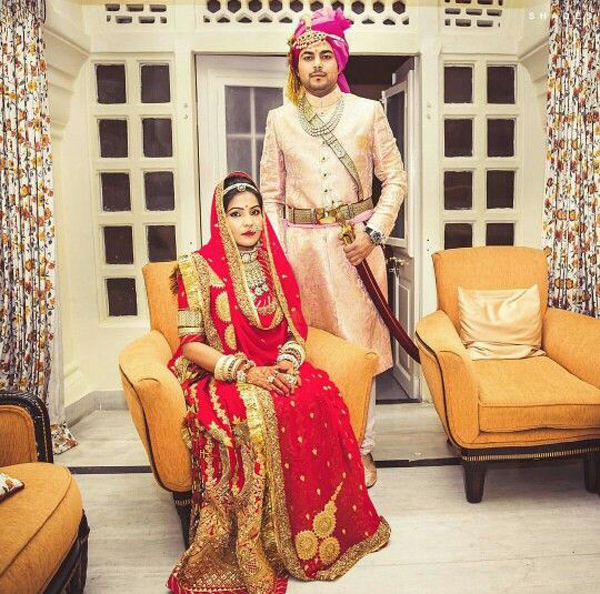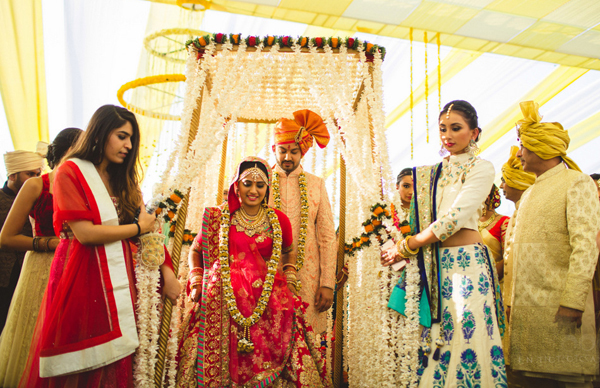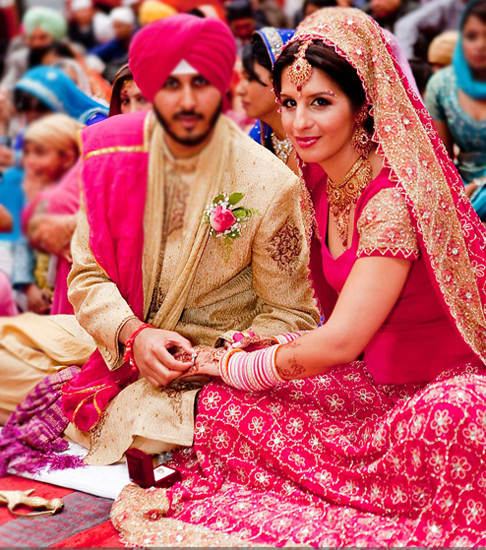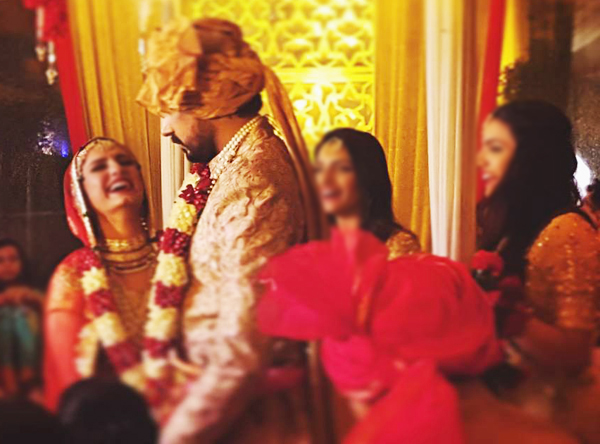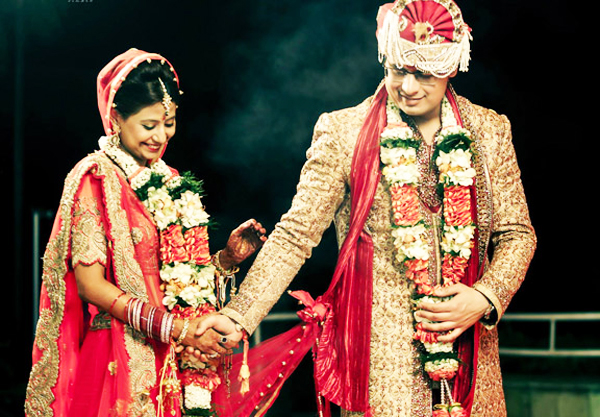A Rajput wedding is all about traditional rituals, lavish and beautiful arrangements and expensive traditional dresses. Their wedding is full of colors and life. The rituals and different ceremonies last for almost a week. The rituals are performed in families, Rajput bride and groom. In a Rajput wedding, you find all the ladies in traditional dress and heavy authentic jewelry. Let’s take a close look at the traditional rituals of Rajput marriage, where the new couple is about to begin their new journey.
Tilak Ceremony: The marriage ceremonies begin with Tilak ceremony. This is generally the official announcement of the engagement or the new alliance. The male members of the would-be bride’s family visit the house of would-be groom. The girl’s brother applies the tilak on the groom’s forehead. The bride’s family member also present gifts such as a sword, clothes, gold jewelry, sweets, fruits and other gift items.
Ganpati sthapana and grah shanti pooja: This ceremony is held a few days before the marriage. This ritual is performed to get the blessing of God Ganpati. To seek his blessings for the most auspicious ritual both the families perform this puja at their homes respectively. In this ceremony, a havan is performed and Ganesha idol is installed in the home.
Pithi Dastoor: This ceremony also takes place in both the families. The females of the family and close relatives of the family apply turmeric and sandalwood paste on the Rajput girl and boy. In this function the ladies of the family sing traditional wedding songs and dance on these songs in group.
Mahira ritual: This ritual takes place in the would-be bride’s and groom’s houses respectively. The uncles donate clothes, jewelry and sweet delicious to the entire family. It is a kind of symbolic gesture to emphassing the fact that the maternal uncle has to lend the financial help to his sister’s family.
Janev ceremony: The groom is supposed to wear a saffron robe and take part in auspicious yagna with priest on the eve of him taking over the duties of a householder.
Palla ceremony: In this ceremony, the family members of groom visit bride’s family to offer some gifts like clothes, jewelry, makeup-kit, fruits, sweets and some other stuff.
Barat procession & marriage rituals: The groom’s barat procession includes males only. All the males are dressed in traditional outfits. The groom generally wears an achakan in golden color or similar shared with orange or red turban. All the male members of the bride’s family receive the barat. The groom is then escorted to ladies section. Bride’s mother performs aarti and other rituals and later on the proceeds for wedding mandap. The bride keeps her face in long veil during the whole rituals like kandyadan, pheras, etc. Another thing which you find different from others is here in all these ceremonies only the females of the bride’s family participate, no males from both the sides take part in these rituals.
LoveVivah.com Rajput matrimonial portal gives online profiles of Rajput grooms and brides for wedding. Choose your life partner from Hindu matrimony profiles.

